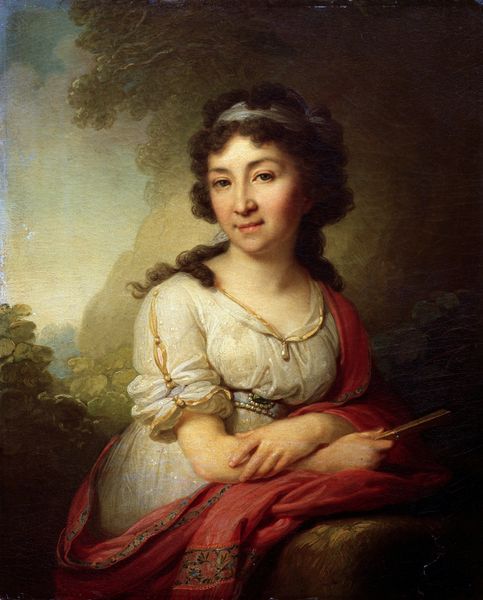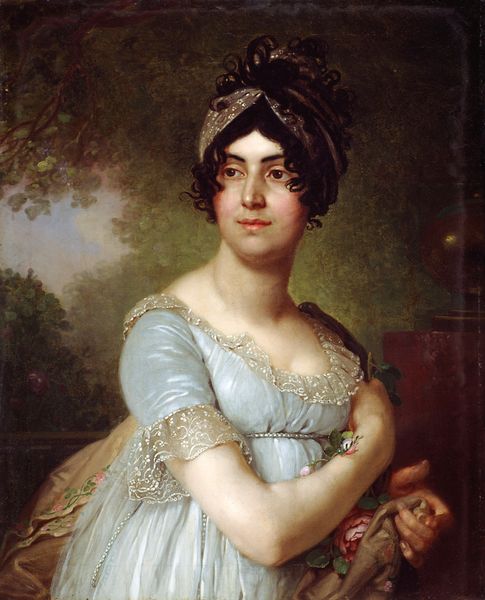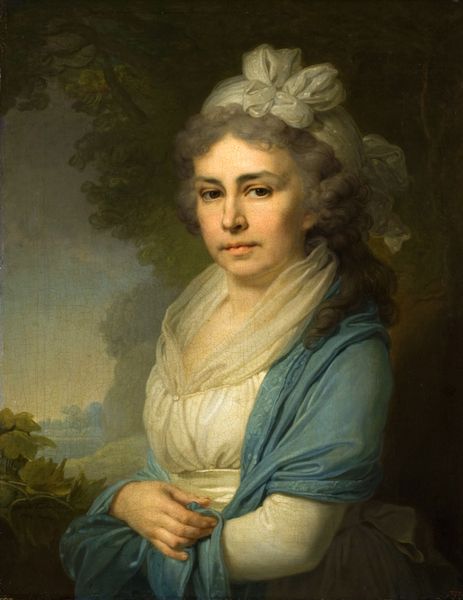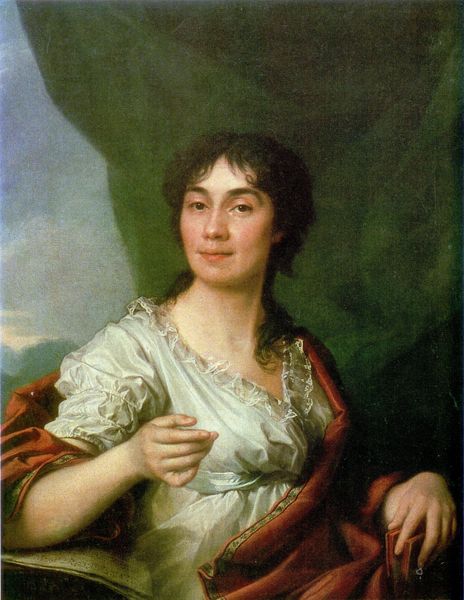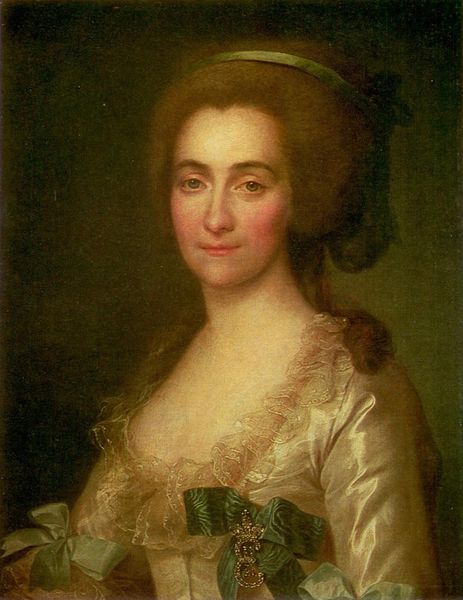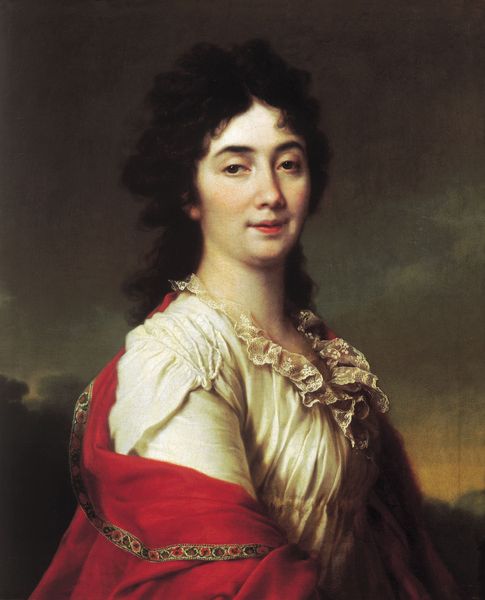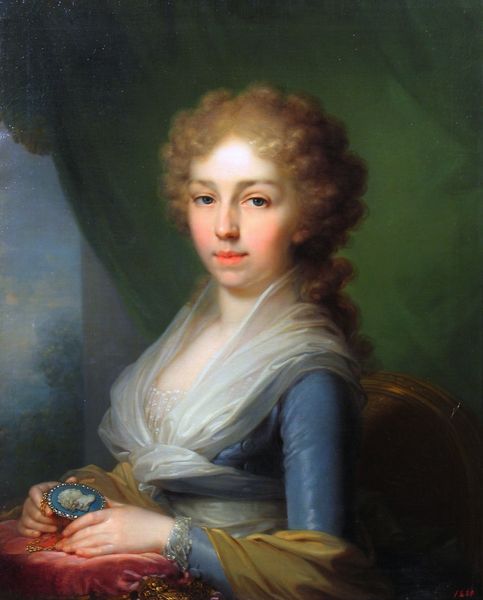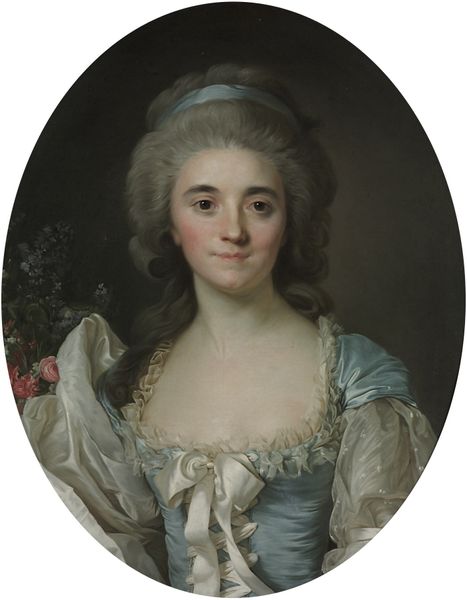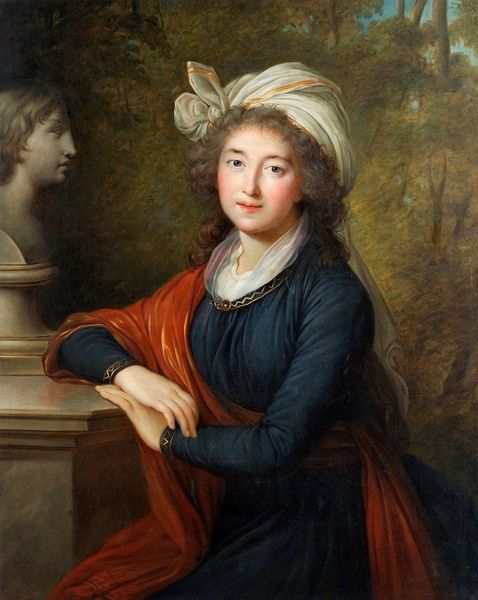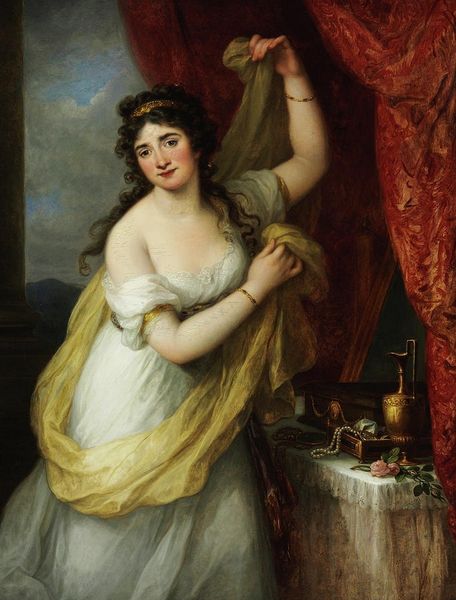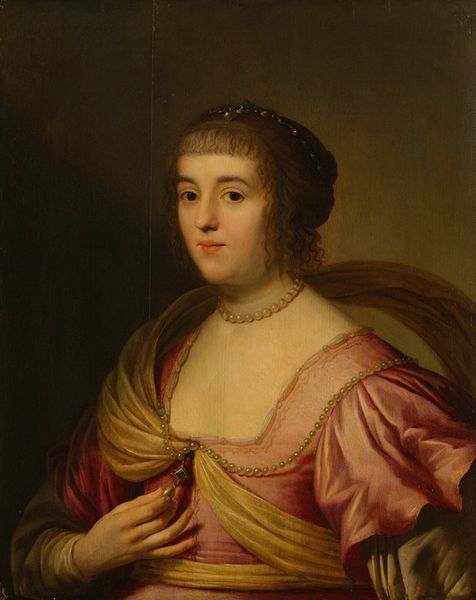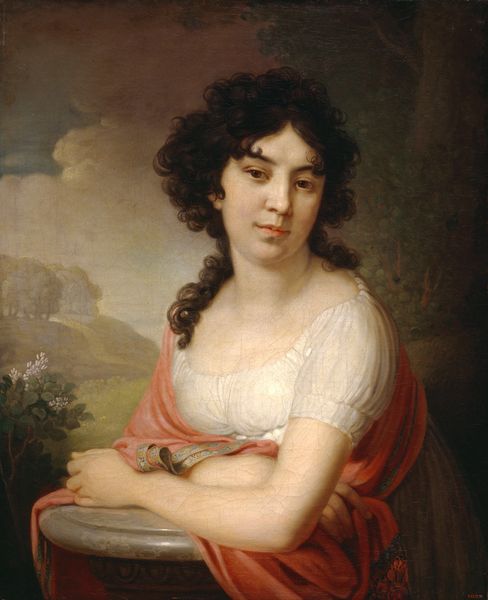
painting, oil-paint
#
portrait
#
painting
#
oil-paint
#
figuration
#
romanticism
#
history-painting
#
academic-art
Copyright: Public domain
Vladimir Borovikovsky painted this portrait of Skobeeva in oil, sometime in the late 18th or early 19th century. It is a work that exemplifies the shift toward sentimentalism and an idealization of rural simplicity that was gripping European aristocratic culture at the time. Borovikovsky was a favorite portraitist of the Russian Imperial court, and here we can see how he adopts the aesthetic tropes of Romanticism to soften and humanize the image of nobility. Gone are the overt symbols of wealth and power; instead, Skobeeva is presented in a simple white dress, set against a pastoral backdrop, and holding an apple, connoting innocence and naturalness. To truly understand this painting, it is important to research the cultural and political context of Catherine the Great's Russia, and to consider how artists negotiated the demands of patronage with emerging artistic ideals. The historian must consider the dynamics of court culture, and how these images helped to shape a new vision of Russian identity.
Comments
No comments
Be the first to comment and join the conversation on the ultimate creative platform.
